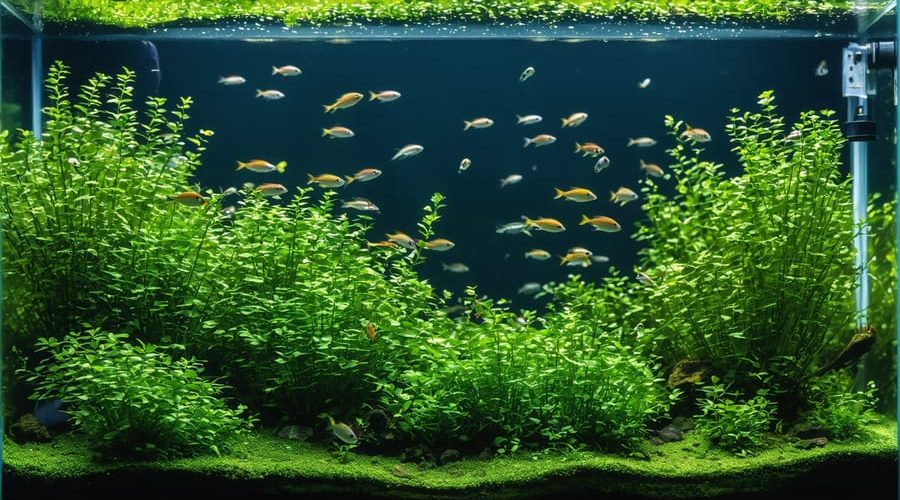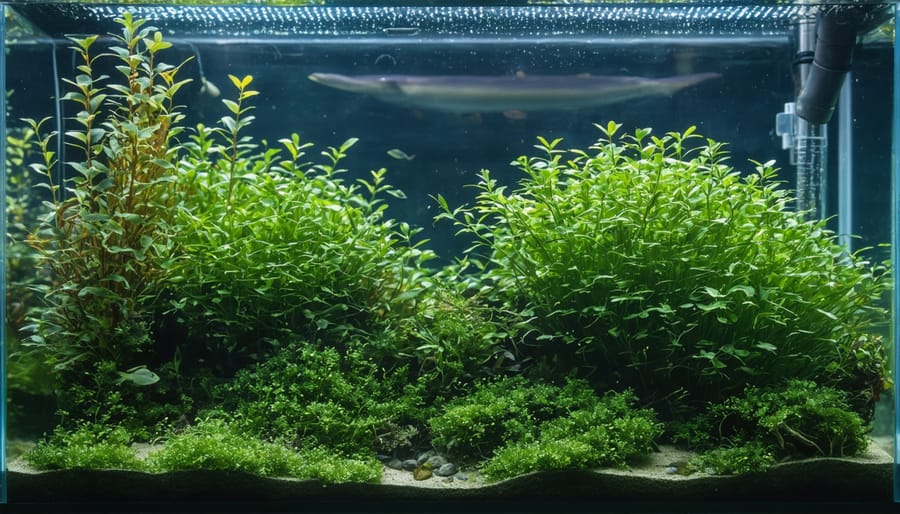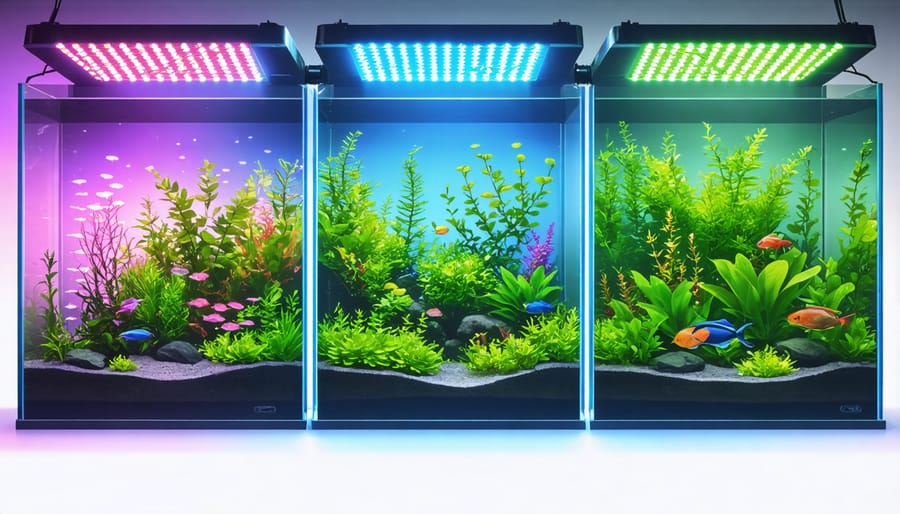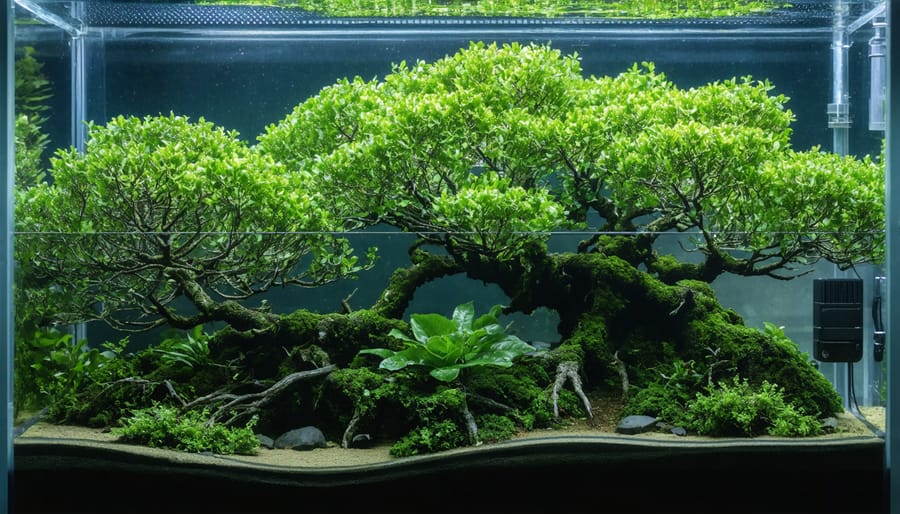
Professional Secrets to Growing Thriving Ocean Plants in Your Aquarium
Beneath the ocean’s surface lies a mesmerizing world of aquatic plants that have evolved to adapt to underwater conditions in remarkable ways. From the swaying seagrass meadows that shelter marine life to the towering kelp forests that create underwater cathedrals, marine plants form the foundation of countless ocean ecosystems. These underwater botanicals not only produce much of Earth’s oxygen but also provide essential habitats and food sources for marine creatures across the globe.
Unlike their terrestrial cousins, ocean plants have developed specialized features to thrive in saltwater environments – flexible stems that dance with the currents, specialized cells for gas exchange, and the ability to photosynthesize at depths where sunlight barely reaches. Whether you’re an aspiring marine biologist, aquarium enthusiast, or simply curious about ocean life, understanding these amazing plants opens up a fascinating window into the intricate balance of marine ecosystems.
This diverse group of organisms, ranging from microscopic phytoplankton to massive brown algae, demonstrates nature’s incredible ability to innovate and adapt. Their story is one of resilience, evolution, and vital importance to our planet’s health.

Essential Ocean Plants for Your Aquarium
Seagrasses
Seagrasses are fascinating marine plants that grow in shallow coastal waters worldwide. Unlike their freshwater cousins, these plants have adapted to thrive in saltwater conditions. Popular varieties include turtle grass (Thalassia testudinum), which forms dense meadows in tropical waters, and eelgrass (Zostera marina), commonly found in temperate regions.
These underwater gardens require specific care to flourish. Most seagrasses need bright, indirect sunlight and prefer sandy or muddy substrates rich in organic matter. Water temperature should remain stable between 68-82°F (20-28°C), with salinity levels matching natural seawater conditions.
For successful seagrass cultivation, maintain excellent water quality through regular testing and filtration. These plants benefit from gentle water movement that mimics their natural habitat. While seagrasses can be challenging to establish initially, they’re remarkably resilient once settled and play a crucial role in marine ecosystems by providing shelter for small fish and helping to prevent coastal erosion.
When planting, anchor individual shoots securely in the substrate and avoid disturbing their roots during maintenance. Regular pruning of dead leaves helps prevent nutrient buildup and promotes healthy growth.
Macroalgae Species
Macroalgae bring vibrant colors and life to marine environments, offering both beauty and essential ecosystem benefits. Green varieties like Sea Lettuce and Caulerpa are popular choices for beginners, as they’re generally hardy and fast-growing. These species help maintain water quality by absorbing excess nutrients and providing shelter for small marine life.
Red macroalgae, including the stunning Dragon’s Breath and Gracilaria, add dramatic splashes of color while serving as excellent nutrient exporters. They’re particularly effective at removing nitrates and phosphates from the water. Brown varieties like Sargassum and Kelp species create natural-looking underwater forests and are vital food sources for marine herbivores.
For those looking to create diverse marine gardens, combining different macroalgae species can create stunning layered effects. Consider starting with hardy Chaetomorpha in the background, medium-height Halymenia in the middle, and carpet-forming Botryocladia in the foreground. This arrangement not only looks beautiful but also provides various environmental benefits, from oxygen production to natural filtration.
Remember to research each species’ light and nutrient requirements before adding them to your setup, as some varieties can be more demanding than others.
Decorative Caulerpa
Decorative Caulerpa species offer a stunning addition to marine aquariums when properly managed. The grape-like Caulerpa racemosa and feathery Caulerpa sertularioides are popular safe varieties that add vibrant green accents to your underwater landscape. These plants thrive in moderate lighting and require regular pruning to prevent overgrowth.
To maintain healthy Caulerpa, trim weekly and remove loose fragments promptly. Keep water temperature between 72-78°F and provide moderate water flow. A stable nutrient level helps prevent aggressive spreading while maintaining the plant’s decorative appeal.
Remember to quarantine new specimens for two weeks before introducing them to your main tank. This practice helps prevent unwanted hitchhikers and ensures the plant’s compatibility with your system. With proper care, these beautiful marine plants can create eye-catching displays without becoming invasive.
Creating the Perfect Environment
Lighting Requirements
Ocean aquatic plants have varying light requirements depending on their natural habitat and growth patterns. Most marine plants thrive with 10-12 hours of light daily, mimicking natural daylight cycles. Shallow-water species like sea lettuce and caulerpa need bright, direct lighting (around 400-500 PAR), while deeper-water plants like certain macroalgae varieties can flourish under moderate lighting (200-300 PAR).
For home aquariums, LED lights are ideal as they provide the right spectrum while being energy-efficient. Full-spectrum lights that include both blue and white wavelengths best support photosynthesis. Red seaweeds typically need less intense lighting than green varieties, thriving at 250-350 PAR.
It’s essential to introduce new plants to your lighting schedule gradually. Start with 6-8 hours daily and increase by 30 minutes weekly until reaching the target duration. Watch for signs of inadequate lighting (pale coloration, slow growth) or too much light (bleaching, algae overgrowth).
Consider seasonal variations too – many species naturally experience different light intensities throughout the year. You can simulate this by adjusting light duration and intensity every few months. For optimal growth, position taller plants where they won’t shade shorter ones, and regularly clean light fixtures to maintain proper intensity.
Remember that proper lighting works hand in hand with other factors like water movement and nutrient levels to keep your ocean plants healthy.

Water Parameters
Maintaining proper water parameters is crucial for creating optimal growth conditions for ocean aquatic plants. The key factors to monitor include salinity, pH, temperature, and light penetration. For most marine plants, salinity should be maintained between 1.020 and 1.025 specific gravity, mimicking natural ocean conditions.
Temperature plays a vital role in plant health, with most species thriving between 72-78°F (22-26°C). Keep your water temperature stable, as sudden fluctuations can stress your plants. A reliable thermometer and quality heater are must-have tools for maintaining consistency.
The pH level should typically range from 8.1 to 8.4, which reflects natural seawater conditions. Regular testing is essential, and you can adjust pH using marine-specific buffers when needed. Remember to test weekly and keep a log of your readings to spot trends early.
Light requirements vary by species, but most ocean plants need moderate to high intensity lighting for 10-12 hours daily. Using a timer helps maintain a consistent schedule, which plants love! Don’t forget about water movement – gentle to moderate flow helps distribute nutrients and prevents debris from settling on leaves.
Testing kits for these parameters are readily available at most aquarium stores. Start with basic tests and expand your testing routine as you become more comfortable with maintenance. Your plants will thank you with vibrant growth and healthy development!
Substrate Selection
Selecting the right substrate is crucial for the success of your ocean aquatic plants. A good substrate not only anchors your plants but also provides essential nutrients and promotes healthy root development. For most marine plants, a combination of fine coral sand and aragonite-based substrate works best, typically with a depth of 2-3 inches.
When preparing your substrate, start with a base layer of nutrient-rich marine soil or clay-based substrate. This foundation helps establish strong root systems and provides long-term nourishment. Above this, add a layer of fine coral sand or aragonite substrate, which helps maintain proper pH levels and provides additional minerals your plants need.
For delicate species like seagrasses, you might want to incorporate some advanced aquascaping techniques by mixing in some live sand, which contains beneficial bacteria and microorganisms. This creates a more natural environment and helps establish a healthy biological cycle.
Remember to rinse your substrate thoroughly before use to remove any dust or debris. If you’re using live rock in your setup, position these first, then add your substrate around them. This prevents air pockets and ensures better stability for your aquatic garden. For areas with high water movement, consider using slightly larger grain sizes to prevent substrate displacement.
Advanced Maintenance Techniques
Pruning and Propagation
Maintaining healthy ocean aquatic plants requires regular pruning, while propagation helps expand your collection naturally. For most species, pruning involves removing dead or yellowing leaves near the base with clean, sharp scissors. This promotes new growth and prevents decay from affecting healthy parts of the plant.
When pruning seaweed varieties, always cut above a growth node to encourage branching. For larger species like kelp, trim back any damaged fronds while leaving the holdfast (root-like structure) intact. Remember to remove pruned material from your tank promptly to maintain water quality.
Propagation methods vary by species, but many ocean plants can be reproduced through division or cutting. For rhizome-based plants like certain seagrasses, carefully separate healthy sections with at least three nodes each. Allow the cut ends to heal for a day before replanting in suitable substrate.
Many macroalgae species can be propagated by fragmenting – simply cut healthy portions into smaller pieces and secure them to rocks or coral rubble using plant-safe ties or glue. These fragments will develop their own holdfast within weeks.
For delicate species, try the “floating method” where cut segments are allowed to float freely until they develop roots. Once rooted, they can be carefully anchored in your desired location. Always maintain stable water parameters during propagation to ensure success.

Nutrient Management
Managing nutrients for ocean aquatic plants requires a delicate balance to promote healthy growth while preventing unwanted algae blooms. The key is to maintain proper levels of nitrogen, phosphorus, and essential trace elements without overdoing it.
Start by testing your water parameters weekly using a reliable marine test kit. Ideal nitrate levels should stay between 0.5-10 ppm, while phosphates work best at 0.03-0.1 ppm. Too much of either can trigger aggressive algae growth that competes with your plants.
Consider using a quality marine plant substrate enriched with iron and other trace elements. This provides a steady nutrient release that won’t spike water parameters. Many experienced gardeners supplement with liquid fertilizers specifically formulated for marine plants, dosing at half the recommended amount initially.
Natural methods can help maintain this balance too. Adding clean-up crew members like marine snails and hermit crabs helps manage excess nutrients, while protein skimmers remove organic waste before it breaks down into problematic compounds.
Watch your plants for signs of nutrient deficiency or excess. Yellowing leaves often indicate iron deficiency, while dark green, stringy growth might mean too much nitrogen. Adjust your feeding and fertilization schedule based on these visual cues and regular water testing.
Remember that strong lighting and good water movement help plants use nutrients efficiently, reducing the risk of algae taking over. Start with modest fertilization and increase gradually as needed.
Common Problems and Solutions
Even the most experienced aquarists face challenges when growing ocean aquatic plants. Understanding these common issues and their solutions is crucial for successful marine plant care strategies.
Yellowing leaves often indicate nutrient deficiencies, particularly iron or nitrogen. Adding a marine-specific plant fertilizer can quickly resolve this issue. If you notice slow growth or pale coloration, check your lighting setup – most marine plants need 8-12 hours of proper spectrum light daily.
Algae overgrowth is another frequent problem that competes with your plants for nutrients. Regular water changes and maintaining proper nutrient levels can help keep algae in check. Consider adding cleanup crews like snails or hermit crabs to naturally manage algae growth.
Melting leaves are common when plants first adjust to new tank conditions. Don’t panic – trim affected areas and ensure stable water parameters. Plants usually bounce back within a few weeks.
Poor root development might occur due to inadequate substrate depth or composition. Use marine-specific substrate at least 2-3 inches deep, and consider root tabs for heavy feeders.
Salt buildup on leaves can block light absorption. Gently wipe leaves with a soft brush during water changes, being careful not to damage delicate tissue. Remember, prevention through proper maintenance is always better than trying to fix problems after they occur.
As we’ve explored the fascinating world of ocean aquatic plants, it’s clear these remarkable organisms play a vital role in marine ecosystems while offering endless possibilities for water gardening enthusiasts. From the hardy seaweeds to delicate flowering species, each plant brings its own unique beauty and benefits to your aquatic environment.
Remember that success with marine plants starts with understanding their basic needs: proper lighting, stable water conditions, and appropriate nutrients. Whether you’re starting with beginner-friendly species like sea lettuce or advancing to more challenging varieties like flowering seagrass, there’s a perfect plant for every skill level and setup.
Don’t be afraid to experiment with different combinations of plants, but always research their specific requirements before adding them to your aquarium or pond. Start small, monitor your plants closely, and adjust care routines as needed. The rewards of maintaining healthy marine plants are well worth the effort – from improved water quality to creating stunning underwater landscapes.
Join the growing community of marine plant enthusiasts and share your experiences with others. There’s always something new to learn and discover in the world of ocean aquatic plants. With patience, dedication, and the knowledge you’ve gained from this guide, you’re well-equipped to begin or expand your marine gardening journey. Happy planting!
